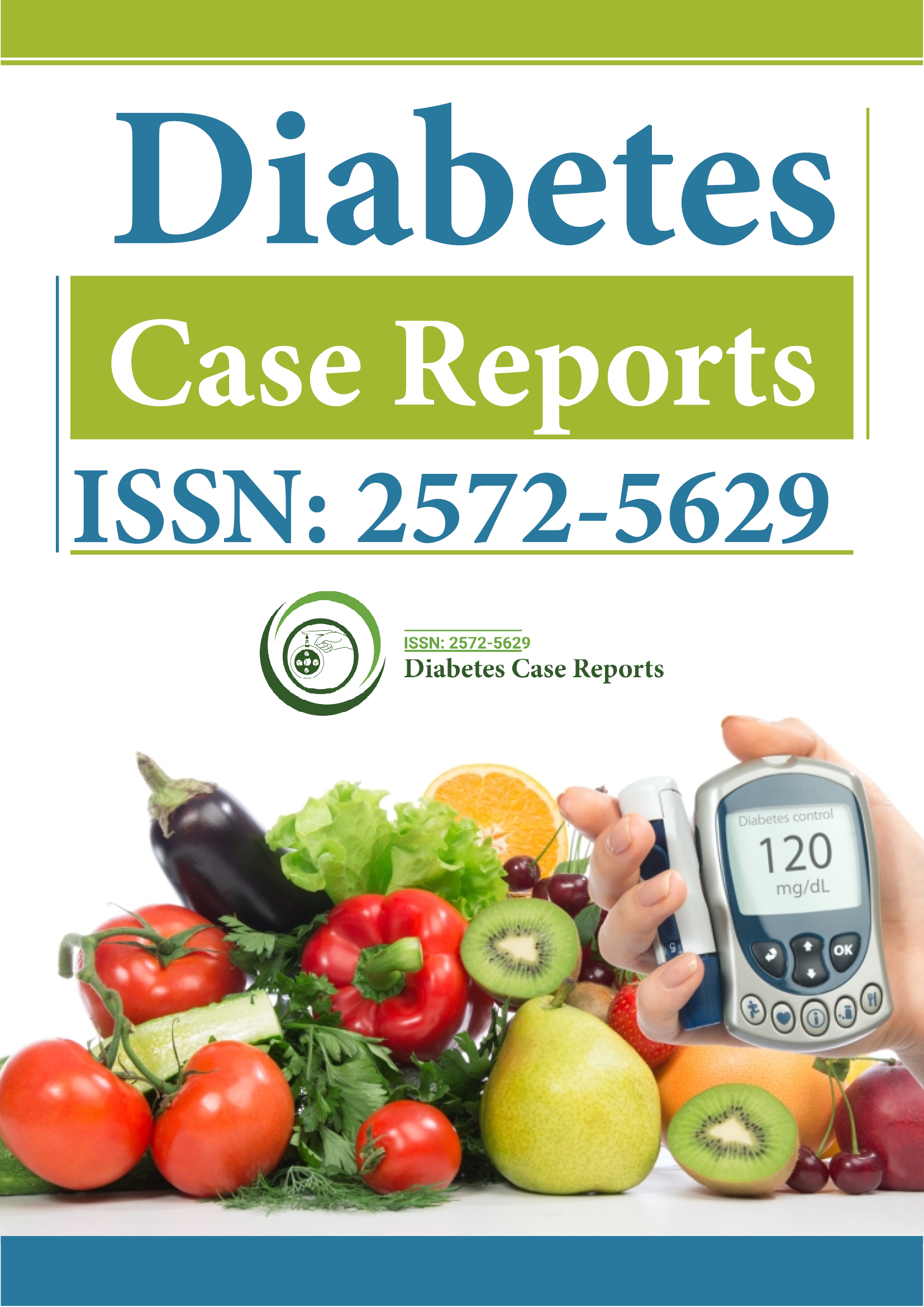Indexed In
- RefSeek
- Hamdard University
- EBSCO A-Z
- Euro Pub
- Google Scholar
Useful Links
Share This Page
Journal Flyer

Open Access Journals
- Agri and Aquaculture
- Biochemistry
- Bioinformatics & Systems Biology
- Business & Management
- Chemistry
- Clinical Sciences
- Engineering
- Food & Nutrition
- General Science
- Genetics & Molecular Biology
- Immunology & Microbiology
- Medical Sciences
- Neuroscience & Psychology
- Nursing & Health Care
- Pharmaceutical Sciences
Opinion Article - (2025) Volume 10, Issue 1
Insulin Resistance and Its Impact on Glucose Metabolism and Pathways
Serge Oliveira*Received: 24-Feb-2025, Manuscript No. DCRS-25-29086; Editor assigned: 26-Feb-2025, Pre QC No. DCRS-25-29086; Reviewed: 12-Mar-2025, QC No. DCRS-25-29086; Revised: 19-Mar-2025, Manuscript No. DCRS-25-29086; Published: 26-Mar-2025, DOI: 10.35841/2572-5629.25.10.236
Description
Insulin resistance is a condition in which the body's cells become less responsive to the hormone insulin, a key regulator of blood sugar glucose levels. Insulin is produced by the pancreas and plays a crucial role in allowing cells in muscles, fat, and the liver to take in glucose from the bloodstream and use it for energy. In people with insulin resistance, this process is impaired, leading to higher levels of glucose in the bloodstream, which can contribute to the development of type 2 diabetes, obesity, and other metabolic disorders. The condition often develops gradually and may go unnoticed for years, which is why it is sometimes referred to as a silent epidemic.
When insulin resistance develops, the body’s cells require more insulin to achieve the same glucose-lowering effect. The pancreas compensates by producing more insulin, leading to higher levels of insulin in the blood, a condition known as hyperinsulinemia. Over time, the pancreas may become less able to keep up with the increased demand for insulin, and blood glucose levels begin to rise. If left unchecked, insulin resistance can eventually lead to full-blown type 2 diabetes, where the body can no longer effectively regulate blood sugar levels.
The causes of insulin resistance are complex and multifactorial, involving genetic, environmental, and lifestyle factors. One of the primary contributors to the development of insulin resistance is excess body fat, particularly abdominal fat. Visceral fat, the fat that surrounds the organs in the abdomen, has been shown to release inflammatory cytokines and free fatty acids that interfere with insulin signaling pathways, making it more difficult for cells to respond to insulin. This is one reason why obesity, especially abdominal obesity, is a major risk factor for insulin resistance.
Insulin resistance is often asymptomatic in the early stages, which makes it difficult to detect without specific blood tests. One of the earliest signs of insulin resistance is an increased level of fasting insulin, as the body works harder to keep blood sugar levels in check. Over time, individuals may experience symptoms such as fatigue, weight gain especially around the abdominal area, difficulty losing weight, and cravings for sugary or carbohydrate-rich foods.
Regular physical activity is another cornerstone of managing insulin resistance. Exercise, particularly aerobic exercise and resistance training, enhances muscle cells ability to take up glucose from the bloodstream, thereby improving insulin sensitivity. Aim for at least 150 minutes of moderate-intensity aerobic activity or 75 minutes of vigorous-intensity activity per week, along with strength training exercises at least two days a week. In addition to physical activity, a healthy diet is crucial in managing insulin resistance. A diet that is high in fiber, particularly from whole grains, vegetables, and legumes, can help regulate blood sugar levels. Reducing the intake of refined carbohydrates and sugary foods is also important, as these foods can cause rapid spikes in blood sugar and contribute to insulin resistance.
Conclusion
Insulin resistance is a prevalent metabolic condition that can have serious long-term health consequences if left untreated. It is a key factor in the development of type 2 diabetes, cardiovascular disease, and other chronic conditions. While insulin resistance is often asymptomatic in its early stages, lifestyle changes such as weight loss, regular physical activity, and a healthy diet can help improve insulin sensitivity and reduce the risk of developing more serious health problems. Early detection and intervention are crucial in managing insulin resistance and preventing its progression into more severe metabolic diseases.
Citation: Oliveira S (2025). Insulin Resistance and Its Impact on Glucose Metabolism and Pathways. Diabetes Case Rep. 10:236.
Copyright: © 2025 Oliveira S. This is an open-access article distributed under the terms of the Creative Commons Attribution License, which permits unrestricted use, distribution and reproduction in any medium, provided the original author and source are credited.
